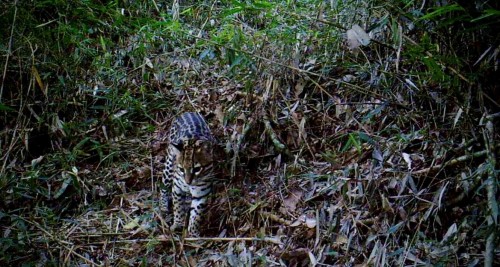Attested presence of ocelots on one of our farms
How planted forest helps create ecological corridors and allows big cats to move between patches of native forest.
Thanks to the recent installation of camera traps in some of our forests, we already captured images of an irara last March. This time, ocelots (Leopardus pardalis), an adult and a cub, were filmed on one of our farms, planted over 12 years ago. Never before had we observed this type of cat on any of our 23 farms in Brazil.
The quality of our planted forests creates a continuity with the islands of endemic forest that favours the presence of these cats as well as other species in the food chain. These observations are an indicator of the health of our forest ecosystems. We are pleased that our actions in Paraná allow wildlife to flourish, and thus contribute to the protection of biodiversity.
Pdf translation:
During the month of June, some species of Brazilian fauna were observed in the SLB Group farms in Brazil. Among them, ocelots, armadillos, irará and pacas.
It is a mammal of the feline family, native to the American continent, and considered the third largest feline on the continent, after the jaguar and the puma. It is about 70-100 cm long, has nocturnal habits and a carnivorous diet.
One adult and one calf have been recorded, which is a good indicator of the ecological quality of the forest areas of the SLB Group. As it is a wild animal and at the top of the food chain, its presence indicates that species from other levels of the chain are present in our forests, and that the forests are well preserved. The recording of these animals was made possible by the installation of 4 cameras in strategic locations on the farms, in order to monitor the wildlife in the area more effectively.
Thanks to the responsible environmental management of the SLB Group, recordings like this will become more and more frequent!
Document lié : Registre_SLB_faune_fr.pdf